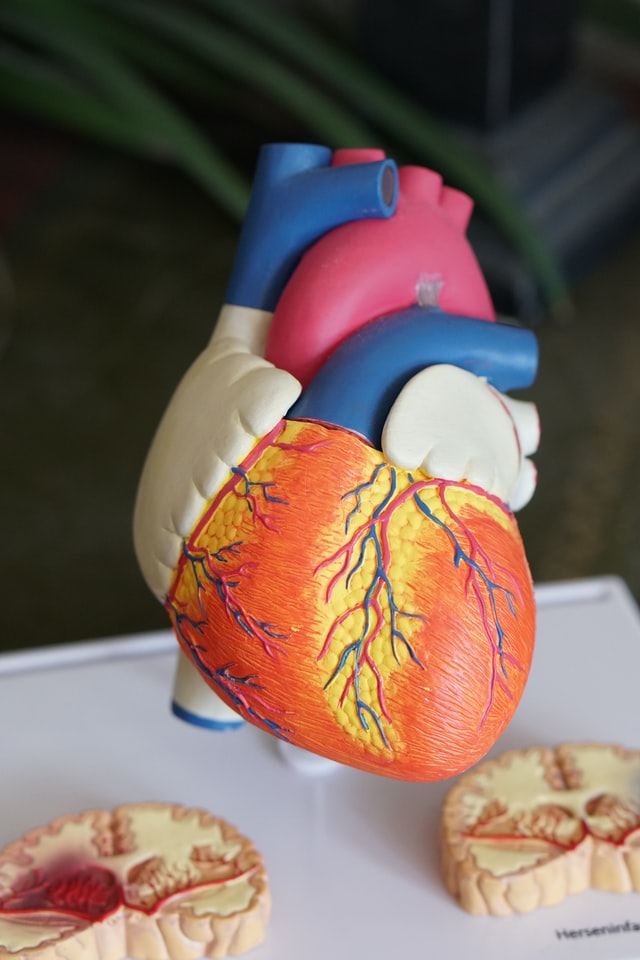
Which creature has a total of five hearts? This question seems very strange for us, but
yes creatures with more than one heart do exist. There are many different animal species with multiple hearts found all over the world, from the depths of oceans to the top of the Himalayas.
How can we compare human and animal hearts?
The heart is undoubtedly a wonder. It keeps humans and animals alive. We rely on the beat of the heart to keep blood pumping through our bodies. It ensures the correct supply of oxygen and nutrients from food to our cells. It works almost in the same way for both humans and animals.
But some animal species with unique biological features can do more than this. It is further interesting to examine how they work, what they look like, and determine the distinctions and comparisons between hearts of different species.
Is the human heart similar to the earthworm heart?
How many times do they beat per minute? Is it possible to survive without a heart? This article will help you find more about cardiac marvels and to know which creature has a total of five hearts.
Some can thrive with the help of multiple hearts to keep their systems flowing, and few can live without a heart. They can survive without the need for blood and nutrients to be pumped into their internal organs. These are mostly sea creatures, and we have listed some of them here.
- Flatworms
- Jellyfish
- Starfish
- Corals and polyps
- Sea anemones
- Sea lilies
These super-simple creatures rely on the process of diffusion, and smaller animals like corals have tiny plants-like creatures that grow on them and made oxygen from photosynthesis, so these animals fulfill oxygen needs from these small creatures.
The human heart can be distinguished from the animal heart according to how much it weighs and the rate at which it beats. The human heart beats nearly 72 times per minute, but it’s surprising to see that for the same time, the heart of a humming’s bird and any other mammal that weighs less than an ounce beats around 1200 to 1260 times per minute, and it slows down to five times per minute for hibernating groundhog’s. A Giraffe’s heart weighs about 62 pounds, whereas a human heart weighs about 0.6 pounds.
Which creature has a total of five hearts-all you need to know
Let’s uncover why these creatures have multiple hearts, why they need them and what it is used for. All of these do not fit in the category of which creatures have a total of five hearts, but you might need to know how multiple hearts work, so we have divided them into different levels for your convenience.
Creatures having three hearts:
Cephalopods belong to this category.
1.Octopus
If you ever admired which animal has three hearts, then the answer is an octopus. The scientific name for octopus is Octopoda. Like mammals, they also have a closed circulatory system. They have one central heart and the other two branchial hearts. Let’s see how these hearts perform their function.
The main heart:
The main heart is also known as a systematic heart. It pumps blood through the circulatory system of the octopus and it works only when the octopus is not moving. These hearts stop pumping as soon as the octopus starts swimming.
The branchial hearts:
They pump blood to the heart for oxygenation through the gills. You may be wondering why these hearts are required while having the central heart.
These functions are because of the cephalopod blood’s composition. Unlike human blood there blood is not composed of iron-rich hemoglobin. The octopus blood has no corpuscules. It is composed of fluid which is like lymph and is of very low viscosity copper-rich protein hemocyanin, which gives their blood blue color. Hemocyanin is less effective than hemoglobin in transporting oxygen. That is why branchial hearts are needed to support the central heart for the supply of oxygen.
2.Squids
There are said to be the cousins of octopuses. Their scientific name is Decapodiformes. There are hundreds of species of squids varying in sizes and shapes. But they all have three hearts performing the same function as that of octopuses—one pumping the blood throughout the body and the others through the gills.
Creatures with four hearts.
Hogfish
They look like an eel, but they belong to the fish class without jaws known as Agatha. They are known to produce enormous amounts of slime. Hagfish which is scientifically named Myxini glutinous, have four hearts. One is the central heart, and the rest of the three are accessory hearts or accessory pumps.
The central heart
Like cephalopods, it pumps the blood through arteries and gills to move oxygen and nutrients around the body
The accessory hearts
Also known as auxiliary hearts. They assist the central heart and pump blood to the systemic heart.
Some other facts that you would love to know about hagfish:
- They survive at the bottom of the ocean where there is a lack of oxygen, and it has been discovered that their hearts can continue beating without oxygen for 36 hours, which is not imaginable in the case of human hearts.
- They don’t have a compound eye to see well, but they have a well-developed and sharp sense of touch and smell. With the help of that, they find food and navigate. They also have sensing tentacles around their mouth and nostril.
- They can survive without eating for months. Their metabolism is slow, and they can withstand months within feedings.
- Hagfish feed on dead and dying creatures. They eat their meal from inside out by burying themselves deep into the carcass.
- With no bones, and are jawless. They have no spine, and their skeleton is made up of cartilage. hagfish take and tear off food with tooth-like projections in the form of horizontally moving structures.
- They breathe using their skin and nose. Hagfish have between 5 to 15 pairs of gills. Their skin has an extensive network of well-developed capillaries that helps them to breathe.
- They are known to be the ancient ones that are 330 million years old.
Creatures having five hearts.
So here’s the answer to your question which creature has a total of five hearts that you are finding all the way.
Earthworm
Earthworms are found pretty much wherever there is dirt. They break down rotting organic matter for the use of plants into simpler components and they play an essential role in an ecosystem. This is surprising because this simple small creature without visible external organs can have a complex inner structure with five hearts.
The circulatory system has five pseudo-heart-like structures: pairs of five unique blood vessels called aortic arches that contracts to provide oxygenated blood to the rest of the earthworm’s body.
Species of earthworms found across the world
Earthworms are segmented as invertebrates, and they belong to the annelids taxonomic group. They are usually small and tiny, but few species can grow up to 10-11 feet longer, such as leeches and other aquatic and terrestrial worms.
More than 1800 species of terrestrial have emerged and spread across the earth. 13 species have been introduced from Europe to the US, whereas they already have 17 native species. They can adjust and appear in almost any climate with soil having enough moisture and decaying matter.
Working of the heart
Earthworm’s body consists of an outer layer that has three parts:
- Muscle
- Epidermis that is skin
- Cuticle, which is a hard protective layer
They have a tube-like shape with 100-150, which allows them to move quickly by contacting and releasing their muscles. Its internal organs are also arranged within this cavity. The heart of the earthworm is located near its mouth in five pairs with one chamber only, and it works more like a human heart.
Why does it work more like a human heart?
Earthworms rely on moisture for the functioning of their respiratory system and use their skin for breathing. Heart-like structures are named aortic arches because of their similarity to arches as well. They resemble the human hearts because earthworms use their nerve cells to regulate heartbeats more like vertebrates, whereas other species of annelids use their muscles for regulating heartbeats.
Closed circulatory system
In this system, blood stays within the blood vessels like that of humans instead of flowing freely.
Open circulatory system
The system where blood moves freely and surrounds the organs is called an open circulatory system.
Earthworm having five hearts has a closed circulatory system like that of vertebrates running the length of their bodies. The blood vessels along the segments carry nutrients and oxygen throughout their body.
Dorsal and ventral blood vessels and arches run through the closed circulatory system.
The arches perform their job by receiving blood from the ventral vessel and sending it back to the dorsal vessel.
Ventral blood vessels
Their function is to send blood back to the aortic arches, and they are located on the underside of the earthworm’s body.
Which creature has a total of five hearts and its ecological importance?
Earthworms are good to have around as they help animals and plants survive. They help break down dead and decomposing organic matter as they decompose and make nutrients such as phosphorus and nitrogen usable for plants. They are at the base of the food web and serves animals such as reptiles, mammals, and birds as their food source.
Tiny but mighty creatures
Earthworms make the plant stronger and healthier by improving the quality of soil by eating and digesting it. They are known to be ecosystem engineers” because they change the soil’s nutrient content and structure.
They help water filter down through the soil and aids in aeration by digging through the mud. The success of crops is enhanced due to improvements in earthworms’ soil conditions, so they are proved to be very important for humans.
Horse

The majority of people are familiar with horses, but they haven’t heard of 5 hearts. Yes! Horses are believed to have a kind of 5 hearts and they are the most surprising one in the list, of which creature has a total of five hearts. Because of the particular organ called frog present at the bottom of each foot.
The frog acts as a blood reservoir. It pumps blood back to the horse’s arteries with each step and every time the foot is placed on the ground. While many people do not accept them to be hearts, but these hoofs perform a function of the heart by pumping blood through the circulatory system. So in this way, the horse is said to have five hearts.
To sum up,
So, where humans have one heart, some creatures have two, three or even five hearts which is quite surprising and exciting at the same time. We have learned their importance, how they work and how they relate to each other in many different or similar ways. What they add to our ecosystem and why they are essential to be studied. This article makes it all clear, along with which creature has a total of five hearts and its importance to our ecosystem, plants, and humans.




